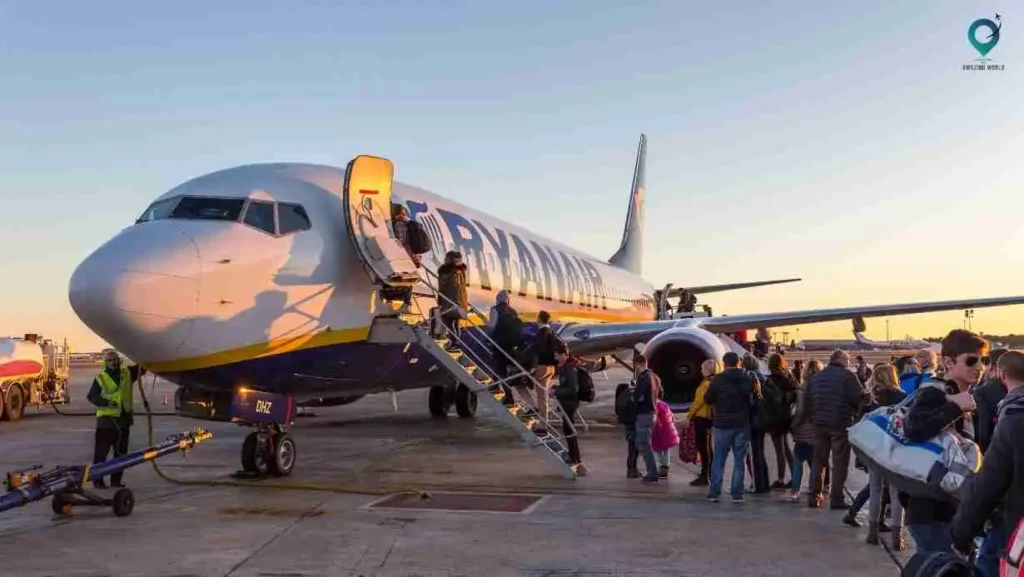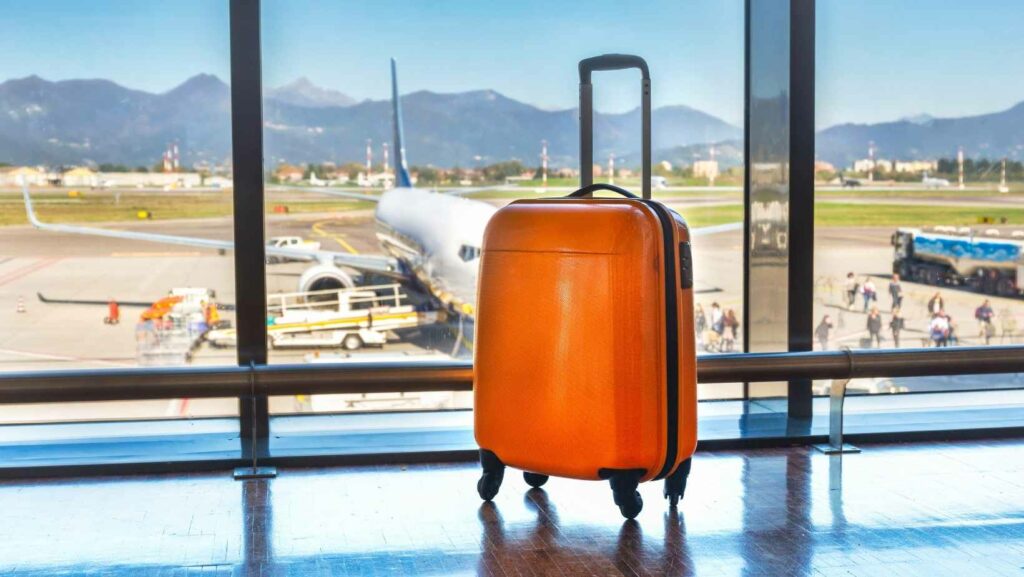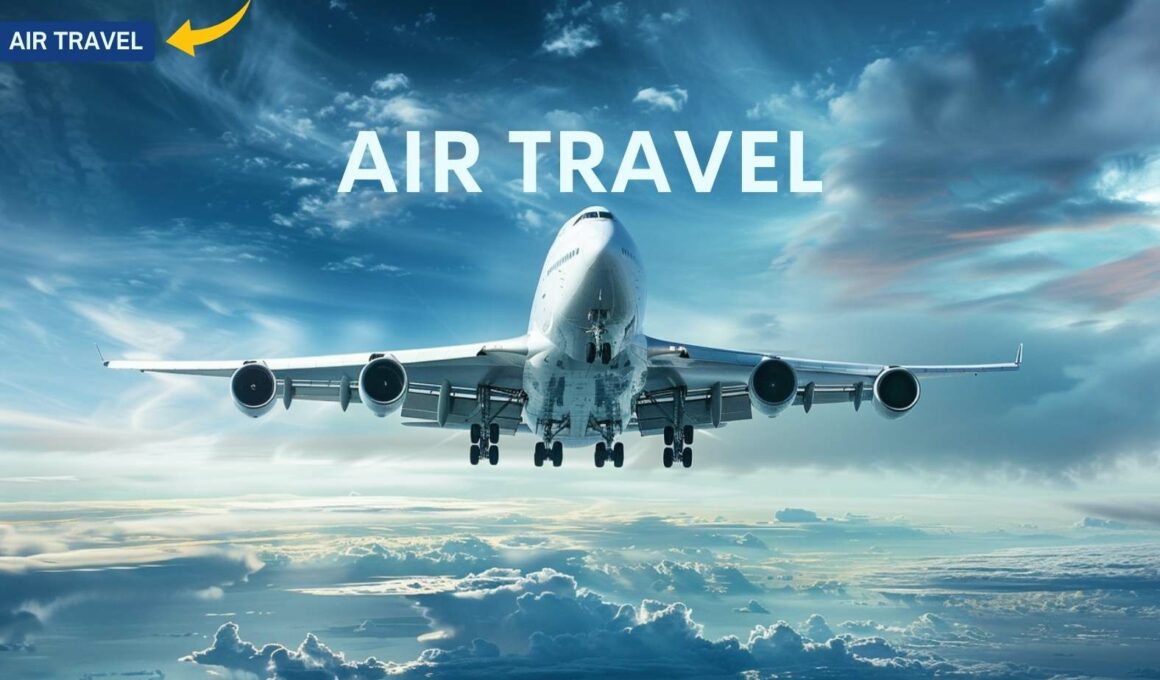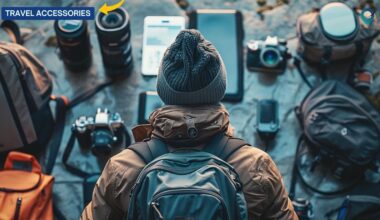Expert Advice: Top 10 Air Travel Tips You Need to Know

Are you getting ready for your next flight and aiming for a smooth travel experience? Whether you travel frequently or occasionally, knowing the best tips for air travel can make a big difference in how smoothly everything goes.
From booking your flights early to packing efficiently and staying updated on your flight’s status, these expert tips will help you navigate airports and flights with confidence. Learn how to prepare effectively, avoid common travel hassles, and ensure a comfortable journey from check-in to landing.
Tip 1: Plan and Book Early

Why Early Planning is Beneficial
Planning and booking your travel early offer several advantages that can significantly enhance your travel experience:
- Cost Savings: Booking flights and accommodations well in advance often results in lower prices. Airlines and hotels typically offer their best deals to early bookers, allowing you to secure lower fares and better rates.
- Availability: Popular flights and desirable accommodations can fill up quickly, especially during peak travel seasons or holidays. By planning early, you increase your chances of securing seats on preferred flights and rooms in preferred hotels.
- Flexibility: Early planning provides you with more options. You can choose from a wider range of flight times, seating options, and hotel rooms, giving you greater flexibility to tailor your travel plans to suit your preferences.
- Reduced Stress: Planning early reduces last-minute rush and stress. You can calmly research your options, compare prices, and make informed decisions without the pressure of impending travel dates.
Tips for Finding the Best Deals
To maximize your savings and benefits when planning and booking early, consider these practical tips:
- Set Fare Alerts: Use travel websites or apps to set fare alerts for your desired routes. This notifies you when prices drop, allowing you to book at the most opportune time.
- Be Flexible with Travel Dates: If possible, adjust your travel dates by a few days to take advantage of lower fares. Flying mid-week or avoiding peak holiday periods can often result in cheaper tickets.
- Utilize Reward Programs: If you’re a member of airline loyalty programs or hotel chains, redeeming points or miles can lead to substantial savings on bookings.
- Compare Options: Don’t settle for the first deal you find. Compare prices across different airlines and booking platforms to ensure you’re getting the best value for your money.
- Consider Package Deals: Sometimes, booking flights and accommodations together as part of a package can offer significant savings compared to booking them separately.
By planning and booking your travel early and strategically, you not only save money but also gain peace of mind and the flexibility to create a travel itinerary that meets your needs.
Tip 2: Pack Smart

Essential Items to Pack
When preparing for air travel, packing efficiently can make your journey smoother and more comfortable. Here are essential items to consider packing:
- Travel Documents: Passport, visa (if required), boarding pass, and any other necessary identification or travel documents.
- Clothing: Pack versatile clothing suitable for the destination’s weather and activities. Consider layers that can be easily mixed and matched.
- Toiletries: Travel-sized toiletries such as toothbrushes, toothpaste, shampoo, conditioner, and any medications you may need.
- Electronics: Chargers for your phone, laptop, or other devices, along with adapters if traveling internationally.
- Travel Comfort Essentials: Neck pillow, eye mask, earplugs, and lightweight blanket for comfort during the flight.
- Snacks: Pack snacks like nuts, granola bars, or dried fruit to keep you energized during the journey.
- Travel Insurance: Copy of your travel insurance policy and emergency contact information.
Packing Tips to Save Space and Weight
To optimize space and minimize the weight of your luggage:
- Roll Clothes: Rolling clothes instead of folding them can save space and reduce wrinkles.
- Use Packing Cubes: Organize clothes and items into packing cubes to maximize space and keep belongings organized.
- Limit Shoes: Pack versatile shoes that can be worn with multiple outfits to save space.
- Consider Laundry Options: If traveling for an extended period, consider packing travel-sized detergent or planning to use laundry services at your destination.
- Pack Multi-purpose Items: Choose items that serve multiple purposes, such as a scarf that can double as a blanket or a backpack that folds into a smaller pouch when not in use.
Tip 3: Check-in Online
Benefits of Online Check-in
Online check-in offers several advantages that can streamline your airport experience:
- Save Time: Skip the queues at the airport by checking in online from the comfort of your home or using a mobile app.
- Seat Selection: Online check-in often allows you to choose your seat in advance, giving you more control over your seating preferences.
- Early Access: Some airlines offer priority boarding or early access to overhead bin space for passengers who check-in online.
- Last-minute Changes: If needed, you can often make changes to your seat or flight details during the online check-in process.
How to Check-in Online Effectively
Follow these steps to check in online efficiently:
- Check Timing: Airlines typically allow online check-in 24 hours before departure. Set a reminder to check in as soon as it opens to secure preferred seats.
- Prepare Documents: Have your travel documents, including passport and booking reference number, readily accessible.
- Follow Instructions: Navigate to your airline’s website or mobile app, and follow the prompts to complete the check-in process.
- Print or Save Boarding Pass: After checking in online, print your boarding pass or save it to your mobile device for easy access at the airport.
Tip 4: Know Your Baggage Allowance

Understanding Baggage Policies
Understanding the baggage policies of your airline is crucial to avoiding unnecessary fees and ensuring a smooth check-in process:
- Checked Baggage: Know the weight and size limits for checked bags. Airlines typically have specific allowances, and exceeding these limits can result in additional charges.
- Carry-on Baggage: Familiarize yourself with the size and weight restrictions for carry-on bags. Be aware of any restrictions on liquids, gels, or other items that must comply with security regulations.
- Additional Fees: Research any fees associated with checked baggage, overweight baggage, or additional bags beyond the standard allowance. Some airlines charge fees for checked bags while others include them in the ticket price.
Tips for Avoiding Extra Fees
To minimize baggage fees and ensure compliance with airline policies:
- Pack Light: Pack efficiently to stay within weight limits for both checked and carry-on bags.
- Weigh Bags Beforehand: Use a luggage scale to weigh your bags before heading to the airport. This helps avoid surprises and allows you to redistribute items if necessary.
- Consider Upgrades: Sometimes, upgrading to a higher fare class includes perks like increased baggage allowances. Compare the costs and benefits to determine if an upgrade makes sense for your trip.
- Ship Items: For bulky or heavy items that exceed baggage limits, consider shipping them separately to your destination.
- Join Loyalty Programs: Some frequent flyer programs offer complimentary or discounted baggage allowances as a perk for members.
Tip 5: Arrive Early at the Airport

Importance of Arriving Early
Arriving early at the airport provides several advantages that contribute to a stress-free travel experience:
- Security Clearance: Allow ample time to navigate security checkpoints, especially during peak travel times when lines may be longer.
- Check-in and Bag Drop: Arriving early ensures sufficient time to check in, drop off baggage (if needed), and resolve any last-minute issues without rushing.
- Gate Arrival: Early arrival at the gate allows you to board calmly and possibly secure overhead bin space if traveling with carry-on luggage.
What to Do with Extra Time at the Airport
Make the most of your extra time at the airport by:
- Exploring Amenities: Check out shops, restaurants, lounges, or other amenities available in the airport terminal.
- Relaxing: Find a comfortable seating area or quiet spot to relax before your flight.
- Connecting to Wi-Fi: Use the airport’s Wi-Fi to catch up on emails, browse the internet, or stay connected with friends and family.
- Reviewing Your Itinerary: Double-check your flight details and any connecting flights to ensure everything is on schedule.
- Preparing for Boarding: Pay attention to boarding announcements and be ready to board when your group is called.
Tip 6: Stay Hydrated and Comfortable

Importance of Hydration During Flights
Staying hydrated is essential for your comfort and well-being during air travel:
- Dehydration Risks: Airplane cabins have low humidity levels, which can lead to dehydration. Drinking water helps counteract this and prevents symptoms like dry skin, fatigue, and headaches.
- Circulation: Drinking fluids promotes blood circulation, reducing the risk of deep vein thrombosis (DVT) during long flights.
- Digestive Health: Hydration supports digestion and helps prevent discomfort or bloating often associated with air travel.
Tips for Staying Comfortable During Long Flights
To enhance your comfort during extended flights:
- Drink Water Regularly: Aim to drink water throughout the flight, even if you don’t feel thirsty. Carry a refillable water bottle and ask flight attendants for refills.
- Avoid Excessive Alcohol and Caffeine: Both alcohol and caffeine can contribute to dehydration. Limit consumption and balance with water intake.
- Moisturize: Use a hydrating facial mist or lotion to combat dry skin. Lip balm can also prevent chapped lips.
- Move Around: Take short walks or do in-seat exercises to promote circulation and reduce stiffness.
- Dress Comfortably: Wear loose, breathable clothing and consider packing layers to adjust to temperature changes.
Tip 7: Understand Security Procedures
Overview of TSA Procedures
Understanding Transportation Security Administration (TSA) procedures can help you navigate security checkpoints efficiently:
- Security Screening: Prepare to remove items such as liquids, laptops, and belts from carry-on bags for screening. Follow TSA guidelines for packing liquids in a clear, quart-sized bag.
- Body Scanners: Be aware of full-body scanners used for screening. Remove metal items like jewelry or belts that may trigger alarms.
- Pat-Downs: If selected for additional screening, remain cooperative and follow instructions from TSA officers.
How to Prepare for Security Checks
Prepare for security checks to expedite the process and minimize delays:
- Arrive Early: Arrive at the airport with enough time to complete security screening without rushing.
- Organize Your Belongings: Pack carry-on bags neatly to facilitate inspection. Place liquids and electronics where they are easily accessible for screening.
- Follow Instructions: Listen to TSA officers and follow their instructions promptly. Be prepared to remove shoes, jackets, and hats as required.
- Be Patient: Security procedures are designed for safety. Stay calm and courteous throughout the screening process.
Tip 8: Stay Informed About Flight Status

Tools and Apps to Track Flight Status
Stay updated on your flight’s status using these tools and apps:
- Airline Apps: Most airlines offer their mobile apps with real-time flight status updates, gate information, and boarding alerts.
- Flight Tracking Websites: Websites like FlightAware, FlightRadar24, and Google Flights provide live tracking of flights worldwide. Enter your flight number or route to monitor updates.
- Travel Apps: Apps like TripIt, Kayak, or Skyscanner allow you to track flights, receive notifications for delays or cancellations, and manage your travel itinerary.
What to Do in Case of Delays or Cancellations
If your flight is delayed or canceled, take these steps:
- Check Updates: Monitor notifications from your airline or flight tracking app for the latest information.
- Contact Airline: Use the airline’s customer service number or app to rebook your flight. Consider using social media platforms for quicker responses.
- Explore Alternatives: Look for other flights or transportation options to reach your destination. Airlines may offer alternatives or compensation for inconveniences.
- Stay Informed: Keep updated on your rights as a passenger regarding compensation, accommodations, or meal vouchers, depending on the delay’s length and cause.
Tip 9: Be Mindful of Jet Lag

Causes and Symptoms of Jet Lag
Jet lag occurs when your body’s internal clock is disrupted due to rapid travel across multiple time zones:
- Causes: Crossing time zones quickly disturbs your circadian rhythm, the body’s natural sleep-wake cycle. This disruption leads to symptoms such as fatigue, insomnia, irritability, and digestive issues.
- Symptoms: Common symptoms include daytime sleepiness, difficulty concentrating, headaches, and mood swings.
Tips for Minimizing Jet Lag Effects
Reduce the impact of jet lag with these strategies:
- Adjust Sleep Schedule: Gradually adjust your sleep schedule several days before travel to align with your destination’s time zone.
- Stay Hydrated: Drink plenty of water before, during, and after your flight to combat dehydration, a common jet lag contributor.
- Sunlight Exposure: Spend time outdoors in natural sunlight upon arrival to help reset your internal clock. Light exposure signals your body to adjust to the new time zone.
- Avoid Excessive Alcohol and Caffeine: Both can disrupt sleep patterns and exacerbate jet lag symptoms.
- Short Naps: Take short naps (20-30 minutes) to combat fatigue without interfering with nighttime sleep.
Tip 10: Stay Safe and Healthy

Health Tips for Air Travel
Maintain your well-being during air travel with these health tips:
- Stay Hydrated: Drink water regularly to prevent dehydration, especially in dry airplane cabin environments.
- Move and Stretch: Combat stiffness and promote circulation by stretching and walking around the cabin periodically.
- Avoid Excessive Alcohol and Caffeine: Both can contribute to dehydration and disrupt sleep patterns.
- Protect Your Skin: Apply moisturizer and lip balm to combat dry air. Consider using a hydrating facial mist during longer flights.
- Eat Light and Nutritious Meals: Choose balanced meals to support your energy levels and digestive comfort during the flight.
Safety Precautions During Flights
Ensure a safe flight by following these precautions:
- Listen to Crew Instructions: Pay attention to safety demonstrations and follow instructions from flight attendants during the flight.
- Wear Your Seatbelt: Keep your seatbelt fastened whenever you are seated, even if the seatbelt sign is off.
- Stow Items Properly: Store carry-on luggage securely in overhead bins or under the seat in front of you to prevent accidents during turbulence.
- Be Aware of Emergency Exits: Familiarize yourself with the nearest emergency exits and evacuation procedures.
- Keep Emergency Contact Information: Have emergency contact details readily available in case of unexpected situations.
Conclusion.
Mastering air travel involves careful planning and strategic decisions to ensure a seamless journey. By booking early and packing efficiently, travelers can secure the best deals and minimize stress. Checking in online and understanding baggage policies further streamline the airport experience.
Arriving early allows for smooth transitions through security while staying hydrated and comfortable during flights enhances overall well-being. Familiarity with TSA procedures and using flight-tracking tools prepares travelers for any contingencies.
Finally, mindful strategies for combating jet lag and prioritizing safety and health ensure a pleasant and safe travel experience. Incorporating these tips empowers travelers to navigate air travel with confidence and ease.
How much did you like Our detailed Expert Advice: Top 10 Air Travel Tips You Need to Know Review Also, please share these Blogs with your friends on social media.
Related Article –
- Hotels.com Review
- Expedia Review
- Booking Budget-Friendly Trips with Expedia
- 10 Expert Tips for Finding Cheap Flights on Expedia
- 15 Best Pet-Friendly Hotels in the UK
- 12 Best Pet-Friendly Hotels in the London

Meet David Hoper, a passionate travel Blog writer with 7+ years of experience in travel content. Through his exemplary storytelling and engaging narratives, he shares his experiences and brings destinations to life. With a keen eye for detail and a love for exploration, he has cultivated a diverse portfolio of travel blogs that inspire and inform readers worldwide.








